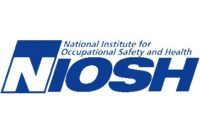How do we define and measure worker well-being? A proposed conceptual framework, with implications for future efforts to improve occupational safety and health, is presented in the July issue of the Journal of Occupational and Environmental Medicine.
The new framework identifies important concepts for use in assessing worker health and well-being: at home as well as at work and including subjective as well as objective assessments. "Well-being is a positive and unifying concept that captures multiple factors that contribute to workers' health and quality of life," write Ramya Chari, PhD, of the RAND Corporation, Arlington, Va., and colleagues.
Sponsored by the National Institute for Occupational Safety and Health (NIOSH), a panel of experts followed an evidence-based process to develop a framework for defining and measuring worker well-being. The framework consisted of five major domains:
• Workplace physical environment and safety climate — including physical and safety features of the work environment.
• Workplace policies and culture — organizational policies, programs, and practices with potential to influence worker well-being.
• Health status — factors related to individuals' physical and mental health and welfare.
• Work evaluation and experience — perceived factors related to quality of work life.
• Home, community, and society — external factors affecting worker well-being.
The framework incorporates work and non-work contexts for a fuller picture of factors affecting workers' health and quality of life. Employer-based workplace interventions, while imperative, "are not sufficient to comprehensively advance worker well-being," Dr. Chari and colleagues write.
The framework also integrates subjective and objective measures of well-being. "Worker well-being may be truly understood through assessing the interactions between a person's subjective perceptions and the surrounding environments that affect them," according to the expert panel. The framework was developed as part of the NIOSH Total Worker Health® initiative, which seeks to develop a holistic approach to improving well-being in the American workforce for the benefit of workers, employers, and the nation.
"Defining, promoting, and evaluating worker well-being is a complex undertaking requiring partnerships and commitments across not just employers but individuals and communities as well," Dr. Chari and coauthors conclude. "However, the goal of helping workers to flourish is an occupational safety and health and population health endeavor worth pursuing."
Citation — Chari R, Chang CC, Sauter SL., et al. Expanding the paradigm of occupational safety and health: a new framework for worker well-being. J Occup Environ Med. 2016;60(7):589-93.
About ACOEM — ACOEM (www.acoem.org), an international society of 4,500 occupational physicians and other health care professionals, provides leadership to promote optimal health and safety of workers, workplaces, and environments.
About the Journal of Occupational and Environmental Medicine — The Journal of Occupational and Environmental Medicine (www.joem.org) is the official journal of the American College of Occupational and Environmental Medicine. Edited to serve as a guide for physicians, nurses, and researchers, the clinically oriented research articles are an excellent source for new ideas, concepts, techniques, and procedures that can be readily applied in the industrial or commercial employment setting.
Defining worker well-being – experts propose new framework
Starting point for NIOSH efforts to improve occupational safety and health

Looking for a reprint of this article?
From high-res PDFs to custom plaques, order your copy today!





